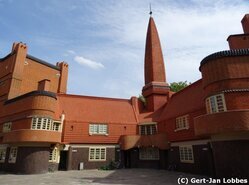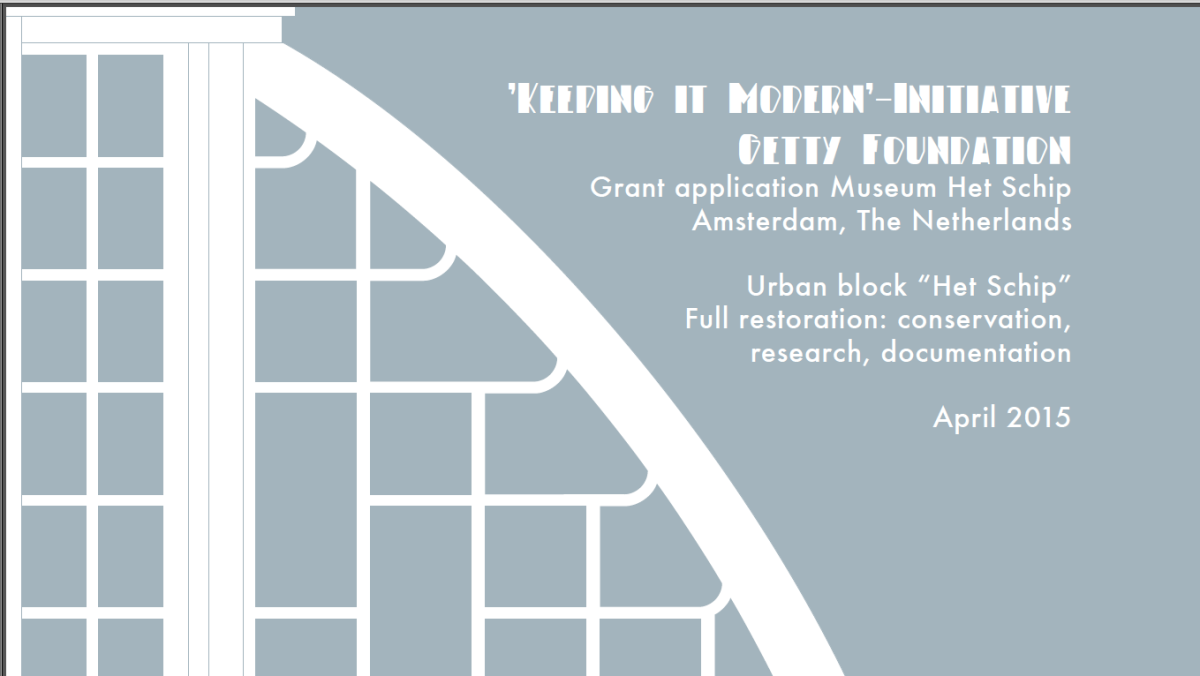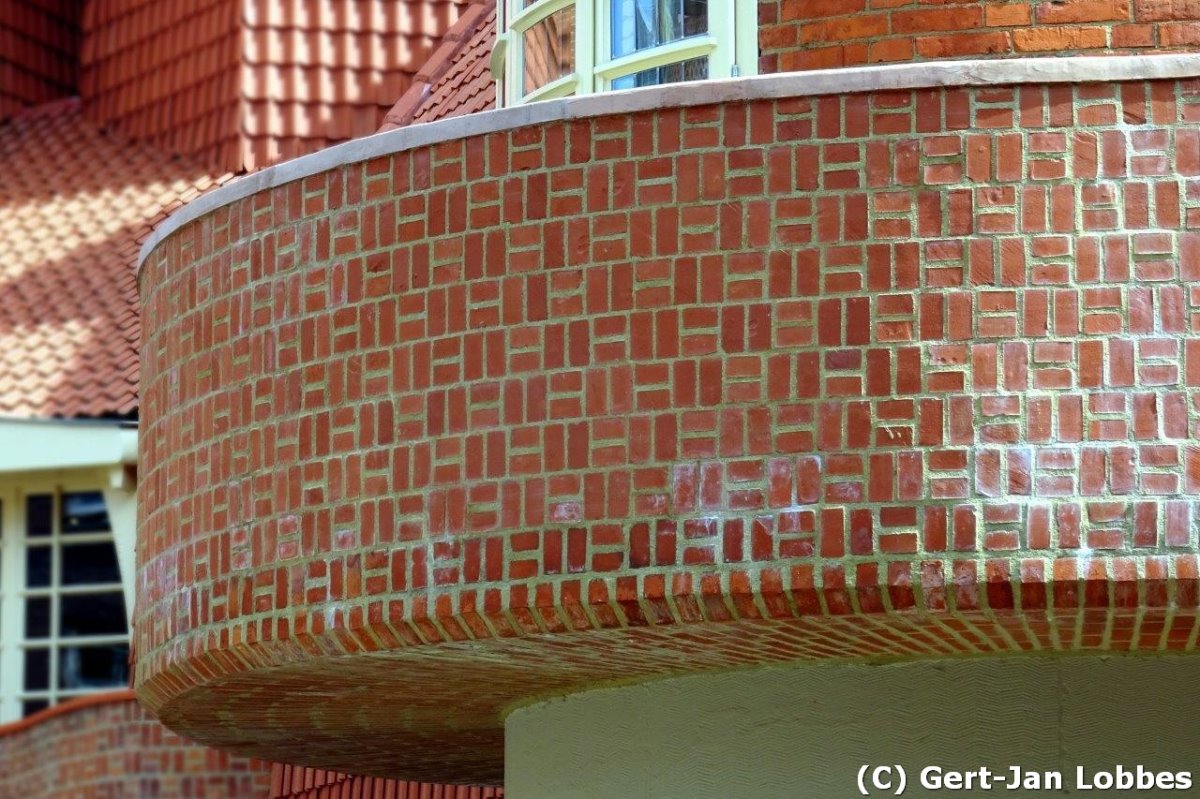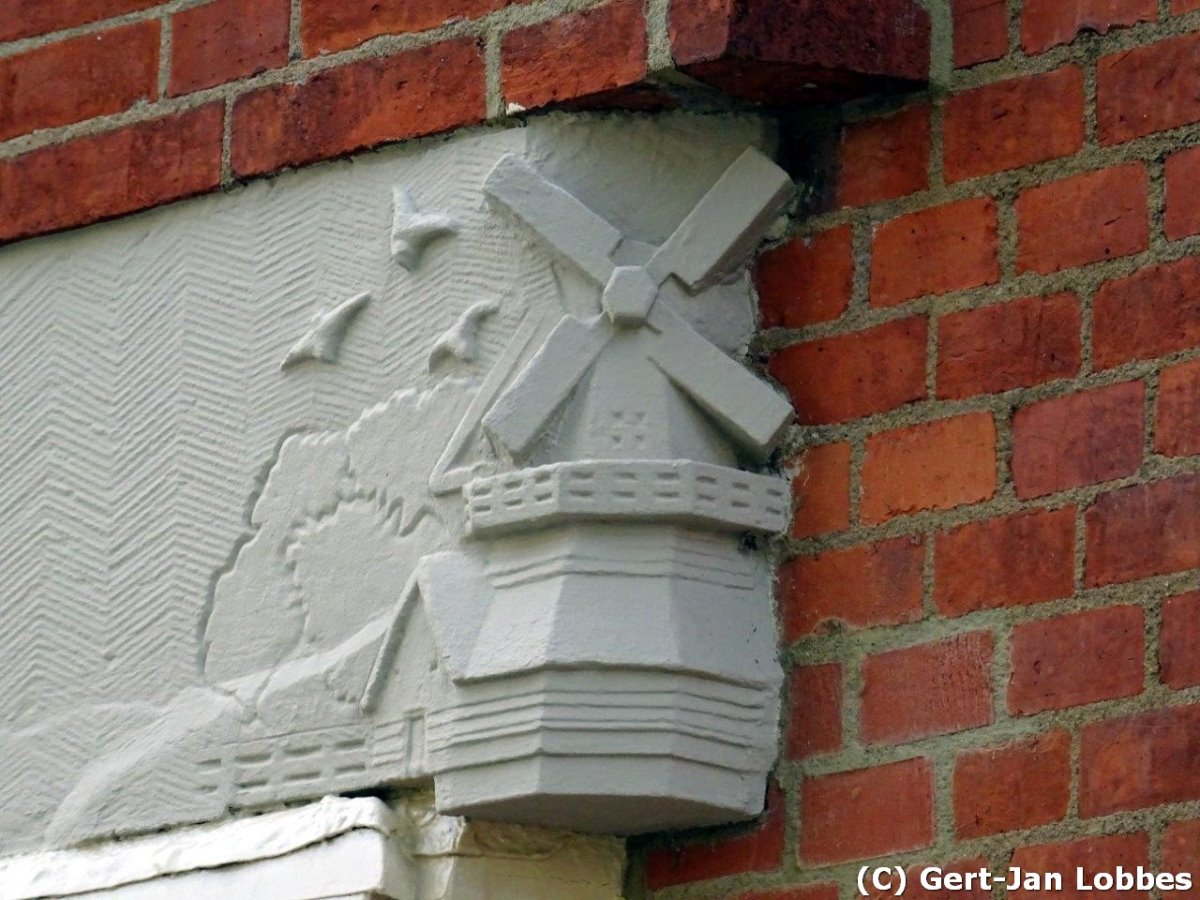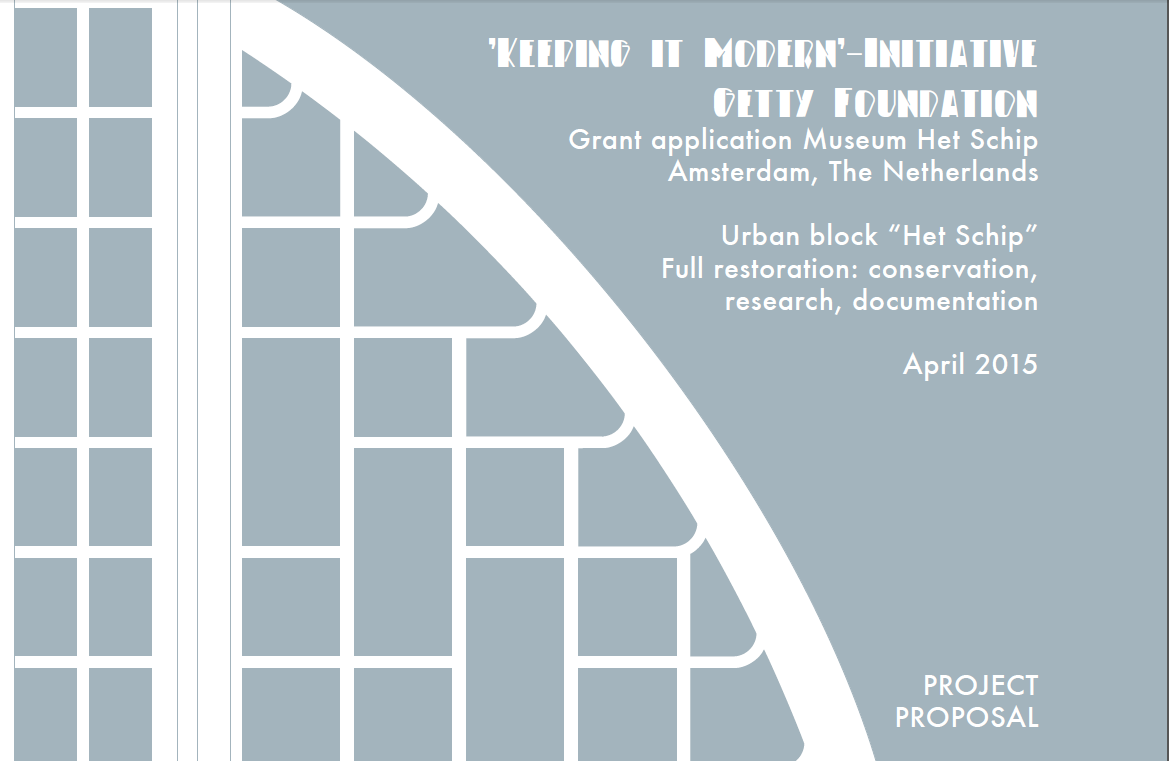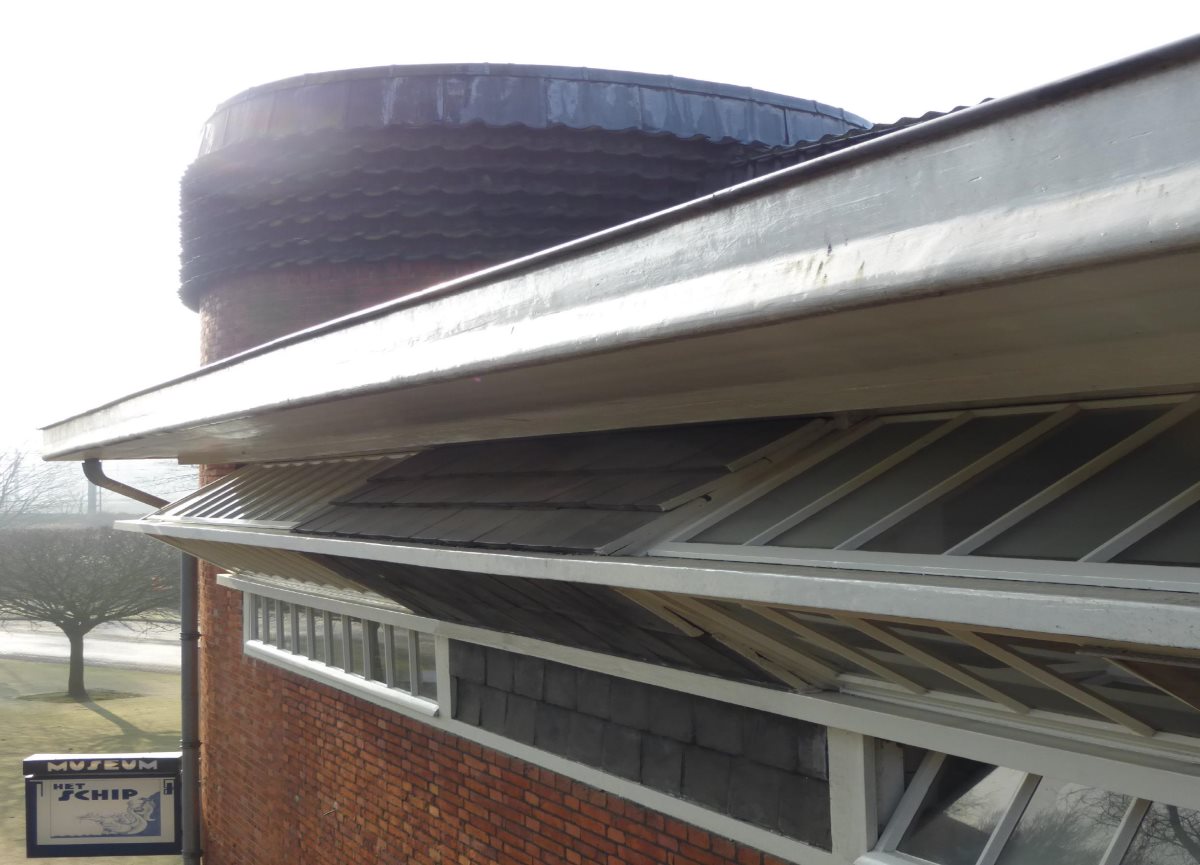Research Symbolism+Meaning

Many architectural and artistic details in Het Schip building, both figurative and abstract, are bearers of symbolic meaning. Many stories go around. Which are true and which are false? First time research into the sources of Michel de Klerk and contemporaries will be undertaken.
- a publication about the meaning of representation in Het Schip;
- a presentation to the design team and the future care-keepers (among which the tenants) of housing block Het Schip;
- the results are to be used later as a case-study in a more comprehensive PhD research project on Amsterdam School.
- Autonomous sculpture (not expressing or communicating function)
- Figurative elements communicating or expressing function
- Other elements of communication, not related to function
- Other ornamental elements
- Abstract elements
- Figurative elements of the extension 1924-1925 (school building)
- (For the full list, see appendix 1)
- What representational elements do the works of Michel de Klerk contain, and how have these been interpreted in literature? This section covers an analysis of modern (since the renewed interest of the 1960s) writings on the architecture of the Amsterdam School, since contemporary criticism has not paid attention to the interpretation of representational elements.
- What notions of the relation between representational meaning and the nature of the different arts were held by artists and architects of the Amsterdam School, and their contemporaries? This section covers an analysis of contemporary writings on the nature of architecture and the nature of other arts, as well as the relations between the arts.
- What meaning-determining elements are of significance for the interpretation of the representational elements in Het Schip? This section covers an analysis of the writings of members of the Amsterdam School, and their contemporaries, to determine what meaningdetermining elements are relevant to the reading of the elements of representation in Het Schip.
- Exterior post office: brick sculpture of birds
- Exterior building: monumental/animal head like chimney top executed in tiles (2x)
- Exterior building: sandstone sculpture of windmill (2x)
- Exterior post office: wooden sculpture of two dogs, and text ‘postkantoor’ (post office)
- Exterior post office: stone sculpture flash of lightning (2x), and stone sculpture of horn (2x)
- Interior post office: wooden flagpole with on top a wooden sculpture of a crown (2x)
- Interior post office: flag executed in stained glass (2x)
- Interior post office: sign ‘forbidden’
- Interior post office: door telephone booth executed in wood & stained glass with motive of a telephone pole and bird on a wire
- Exterior building: the year 1919, 1) in sandstone, 2) in wrought iron
- Exterior community house: the year 1920, and text ‘Eigen Haard’, both in brick
- Exterior post office: stone sculpture under balcony, jellyfish or mushroom like
- Exterior post office: stone sculpture entrance post office, combined with house number
- Tower entrance post office: top ornament
- Tower Hembrugstraat: top ornament
- Plasticity of shapes
- Color and color contrast in interior post office, bricks, mortar, and tiles
- Exterior: sculpture of a horse (3x)
- Exterior: sculpture of a man
- Exterior: woodcarving of an archer with wild life
- Interior: wooden sculpture of the head of a horse (ornament wooden stairs)
- What representational elements do the works of Michel de Klerk contain, and how have these been interpreted in literature? This section covers an analysis of modern (since the renewed interest of the 1960s) writings on the architecture of the Amsterdam School, since contemporary criticism has not paid attention to the interpretation of representational elements.
- What notions of the relation between representational meaning and the nature of the different arts were held by artists and architects of the Amsterdam School, and their contemporaries? This section covers an analysis of contemporary writings on the nature of architecture and the nature of other arts, as well as the relations between the arts.
- What meaning-determining elements are of significance for the interpretation of the representational elements in Het Schip? This section covers an analysis of the writings of members of the Amsterdam School, and their contemporaries, to determine what meaningdetermining elements are relevant to the reading of the elements of representation in Het Schip.
- Bock, M. 1997. ‘Inleiding,’ 9-25 in Michel de Klerk; Bouwmeester en tekenaar van de Amsterdamse School, 1884-1923.
- De Klerk, M. 1916. ‘De invloed van Dr. Berlage of de ontwikkeling der Nederlandsche bouwkunst,’ 331-332 in Bouwkundig Weekblad 1916.
- ‘Moderne architectuur in Holland’, (1916) Leeuwarder Courant 23 november 1916.
- H.H. [Hub. Hoste] 1916. ‘Bouwblokken III. Spaarndammerplantsoen’, De Telegraaf 12 januari 1916.
- Johannisse, S. 1997. ‘Eenheid, beweging en ruimte,’ 26-55 in Michel de Klerk; Bouwmeester en tekenaar van de Amsterdamse School, 1884-1923.
- Stissi, V.V. 1997. ‘De woningblokken van De Klerk,’ 56-93 in Bock, M, Johannisse, S. & V. Stissi in Michel de Klerk; Bouwmeester en tekenaar van de Amsterdamse School, 1884-1923.
- Wils, Jan. 1918. ‘Beeldbouwkunst,’ 12-14 in Wendingen, jaargang 1, nr. 6.
- NAI; archief De Klerk [studie oorspronkelijke tekeningen-elementen-ontwerpproces]
- Casciato, M. 1991. De Amsterdamse School.
- Frank, S.S. 1970. Michel de Klerk, 1884-1923. An architect of the Amsterdam School
- Museum Het Schip 2012. Arbeiderspaleis Het Schip.
- Searing, H. 1971. Housing in Holland and the Amsterdam School.
- Van Burkom, F. 1990. Michel de Klerk: bouwen meubelkunstenaar (1884-1923)
- Van Burkom, F. [ed.] 2009. Kunst aan de straat: behoud van Amsterdamse beelden op bruggen en gebouwen uit het interbellum.
- Vriend, J.J. 1970. Amsterdamse School
- Blauw, C.J. 1918. ‘De beweeglijkheid van de bouwkunst der laatste dagen,’ 3-8 in Wendingen jaargang 1, nr. 2.
- De Klerk, M. 1916. ‘De invloed van Dr. Berlage of de ontwikkeling der Nederlandsche bouwkunst,’ 331-332 in Bouwkundig Weekblad 1916.
- Endt, P.H. 1918. ‘Amsterdamse School,’ 3-5 in Wendingen jaargang 1, nr. 7.
- Godefroy, J. [1911-1923] Handboek voor kunstgeschiedenis, stijl- en ornamentleer.
- Havelaar, Just (1920). De symboliek der kunst.
- Havelaar, Just (1922). Het sociaal conflict in de beeldende kunst.
- Havelaar, Just (1923). Het leven en de kunst.
- Havelaar, Just (1928). Hildo Krop. Lauweriks [symbolen?]
- Oud, J.J.P. 1916. ‘Over cubisme, futurisme, moderne bouwkunst, enz.’ 156-157 in Bouwkundig Weekblad 1916.
- Oud, J.J.P. 1916. ‘De moderne en modernste bouwkunst,’ 341-343 in Bouwkundig Weekblad 1916.
- Oud, J.J.P. 1918. ‘Glas in lood van Theo van Doesburg,’ 201-202 in Bouwkundig Weekblad 1918.
- Roland Holst, R.N. 1927. Over vrije en gebonden vormen in de plastische kunst.
- Van Doesburg, Th. 1924. ‘De nieuwe architectuur. Korte samenvatting der
- architectuurprincipes gedurende 1916 tot 1923 door den stijlgroep in Holland practisch en theoretisch ontwikkeld,’ 200-204 in Bouwkundig Weekblad 1924.
- Van Loghem, J.B. 1916. ‘Bouwmeester en kunstnijveraar,’ 223-224 in Bouwkundig Weekblad 1916.
- Van Loghem, J.B. 1917. ‘Twee moderne uitingen,’ 287-288 in Bouwkundig Weekblad 1917.
- Van Loghem, J.B. 1918. ‘De eenheid in de komende kunst,’ 15-16 in Wendingen jaargang 1, nr. 5.
- Verkruysen, H.C. 1917. De verhouding der kunsten.
- Verkruysen, H.C. 1918. Het schoonheidsbegrip benevens eenige gedachten over symboliek.
- Verkruysen, H.C. 1924. ‘Beeldhouwwerk in verband met architectuur,’ in Wendingen jaargang 6, nr. 1.
- Wils, Jan. 1918. ‘Beeldbouwkunst,’ 12-14 in Wendingen, jaargang 1, nr. 6.
- Blotkamp, C. 1978. Kunstenaren der idee. Symbolistische tendenzen in Nederland ca. 1880-1930.
- De Heer, Jan [ed.] 1986. Kleur en architectuur.
- Dosi-Delfini, L. 2004. The Furniture Collection Stedelijk Museum Amsterdam 1850-2000; From Michael Thonet to Marcel Wanders. [kleur in de meubelen van Kramer vs. Rietveld: http://www.stedelijk.nl/tentoonstellingen/kramer-vs-rietveldcontrasten-in-de-meubelcollectie]
- Koopmans, Y. 1994. H. A. van den Eijnde, 1869-1939.
- Koopmans, Y. 2006. John Rädecker; de droom van het levende beeld.
- Kropholler, A.J. 1938. Kunst en leven. Lijn en vorm, licht en kleur in bouw- en aanverwante kunst.
- Lagerweij-Polak, E.J. 1992. Hildo Krop; beeldhouwer.

